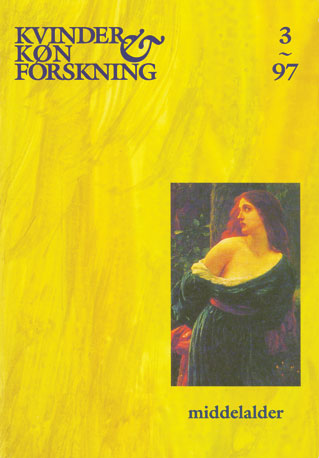Køn, krop og ånd i middelalderen
DOI:
https://doi.org/10.7146/kkf.v0i3.28482Abstract
Very often, the medieval view on "gender" and "body" is depicted either unequivocally negative or just equivocal. According to this simplistic picture, a number of medieval men and women have been portrayed as alternately extremely misogynist and extremely submissive and self-suppressing. With the examples of Bernard of Clairvaux, Beatrice of Nazareth, Mechtild of Hackeborn, and Gertrud of Helfta, this article tries to differentiate more subtly the perception of the concepts "woman/female" and "man/male" by pointing to their function as symbols within the Christian tradition. Furthermore, it is demonstrated that the view on body/soul is not an expression of simple dualism.Downloads
Published
1997-10-29
How to Cite
Wiberg Pedersen, E. M. (1997). Køn, krop og ånd i middelalderen. Women, Gender & Research, (3). https://doi.org/10.7146/kkf.v0i3.28482
Issue
Section
Articles
License
Publications in Women, Gender and Research are licensed under Creative Commons License: CC Attribution-NonCommercial 4.0

